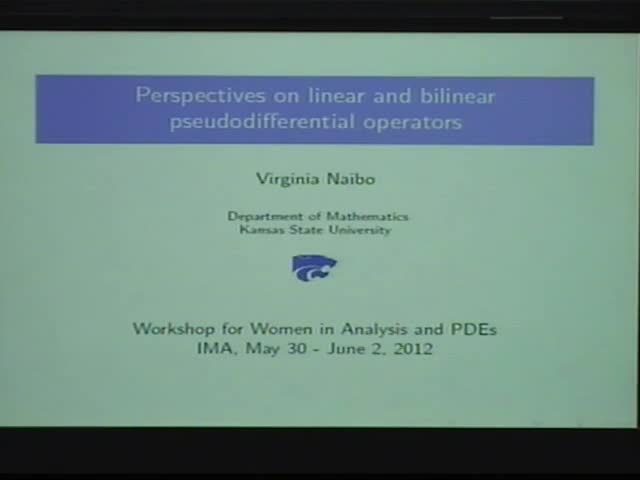Perspectives on linear and bilinear pseudodifferential operators
Presenter
May 30, 2012
Keywords:
- Pseudodifferential operators
MSC:
- 47G30
Abstract
Pseudodifferential operators (PDOs) stand as the centerpiece of the Fourier (or time-frequency) method in the study of PDEs. They extend the class of translation-invariant operators since "multipliers" are replaced by "symbols". The quantitative behavior of these symbols, primarily illustrated by the well-known Hormander classes, allows for a complete
picture (largely based on the work of Calderon, Fefferman, Hormander, Kohn, Nirenberg, Stein, Vaillancourt, and Wainger) of the mapping properties of PDOs in Lebesgue spaces. Moreover, this classical theory establishes connections between PDOs and the Calderon-Zygmund theory of singular integrals as well as a description of the interplay between the classes of symbols and the operations of transposition and composition of PDOs.
In this lecture we will review the classical linear theory of PDOs, introduce and motivate the bilinear theory and report on the current status of the known mapping properties of bilinear PDOs in products of Lebesgue spaces. We will draw analogies between the linear and bilinear theory as well as stress some differences between them. Applications and motivations for the bilinear theory include the study of paraproducts, commutators, and fractional Leibniz-type rules.
